- Center Pivot Irrigation Systems
- Linear Move Irrigation Systems
- Traveling Gun Systems
- Solid Set and Permanent Set Irrigation Systems
- Micro-Irrigation Systems
- Energy for Irrigation
- Water Sources for Irrigation
The majority of agricultural irrigation systems in Georgia fit into one of two broad categories: sprinkler irrigation and micro-irrigation. Sprinkler irrigation systems include center pivot, linear move, traveling gun, permanent set, and solid set. Micro-irrigation systems include drip (or trickle) irrigation and micro-sprinklers.
No one system is a best fit for every application. Once you decide to install an irrigation system, you must consider several important factors before deciding which system is best for your situation. These factors include:
- crop
- fuel cost and availability
- initial cost
- labor requirements
- size and shape of field
- water source and availability
In some situations, there may be additional considerations such as whether you own the land or are leasing. You may also own some equipment, such as a well or pumping unit, and wish to adapt the system to this existing equipment. This publication is intended primarily for the farmer who has made the decision to irrigate and is in the process of deciding what type system will best fit into his or her operation.
Center Pivot Irrigation Systems
The center pivot is the most widely used irrigation system on Georgia farms. It is a self-propelled system that rotates around a central pivot point. The drive mechanism for this system may be water pressure, hydraulic oil, or electric motors. Most systems in use today have electric drive systems. The time required for a rotation depends on the system size, pump, or well capacity and the amount of water to be applied at each application; this time can range from hours to days.
The depth of water applied (expressed in acre-inches) in a given application is determined by the speed at which the system moves around the field and the system flow rate. This travel speed is set by the operator and is determined by the desired depth of water to be applied to the field. Since the flow rate to the system remains constant, the more acre-inches of water applied, the longer it will take the system to complete a rotation.
Since center pivots cover a circular area, they are best adapted to fields that are round or square. Because the majority of fields in Georgia are neither, some part of the field may remain unirrigated. On some irregular-shaped fields, farmers may install part-circle systems to as much area with irrigation as possible. These systems generally cost more on a per-acre basis since they are not capable of completing a full circle.
Pipelines on center-pivot systems are generally 5 to 8 in. in diameter, depending on the system capacity and overall system length. Tower spacing (support structure with drive wheels) will vary from 100 to 200 ft. An overhang may be used to extend the coverage beyond the last tower.
Many center pivots have end guns that are large-volume sprinklers located at the outer end of the system. These can be turned on and off as the system moves around the field; they allow the system to water an additional 100 to 150 ft in corners and other irregular parts of the field. Most manufacturers also offer a corner pivot option that consist of an extra span at the end of the system that can swing out and water an additional 300 to 400 ft in the corners of the field. To determine the number of acres covered by a center pivot, use the following formula:
Acres Irrigated = (3.14 x R x R) ÷ 43,560
Where:
R = wetted radius in feet including end gunExample:
System Length = 900 ftEnd Gun wetted distance = 100 ft
Wetted Radius (R) = 900 + 100 = 1,000 ft
Acres Irrigated = (3.14 x 1000 x 1000) ÷ 43,560
= 72 acres (assumes end gun is on 100% of time)
On some systems, provisions can be made to rotate the drive wheels 90 degrees to facilitate moving the machine from one pivot point to another (towable center pivot). Towable center pivots have proven useful for small irregular-shaped fields. They are most common on small adjoining fields (usually 75 acres or fewer). The major advantage of this type of system is that it can be used on more than one field, reducing the initial investment per acre. A major disadvantage is the labor required to move the system.
In the initial design of a center pivot system it is important that the system be capable of supplying the peak water requirements of the crop. For instance, in Georgia, UGA Extension estimates that corn (maize) maximum water use will be approximately 0.34 in. per day, or 2.38 in. per week. A system designed using this criterion will be sufficient to supply the water needs of most any crop grown in this area. To avoid exceeding soil intake rate, a farmer will often divide the weekly amount over two or three irrigation events. For corn, the 2.38 in. divided over three events would mean the center pivot should be designed to deliver 0.79 in. during each event. The required flow rate for a center pivot can be calculated using the following formula:
Q = (453 x A x D) ÷ (F x H)
Where:
Q = required system flow rate (gallons per minute or gpm)A = total area irrigated by system (acres)
D = depth of water applied per irrigation (inches)
F = irrigation frequency (days per week)
H = hours of operation per day (hours)
Example:
You want a 72-acre system to apply 0.79 in. over 2 days, operating 20 hr per day (40 hr total).Q = (453 x 72 x 0.79) ÷ (2 x 20) = 643 gpm
Sprinkler Options for Center Pivots
A large number of sprinkler package options are available for center pivots. You may receive conflicting information as to which option best fits your situation, and the choices can be confusing.
The purpose of a sprinkler is to take water from the source (such as the pivot mainline) and distribute the water uniformly over an area in droplet form. In order to cover a large area, a sprinkler must throw water a considerable distance. This requires pressure that translates into fuel consumption at the pump. A reduction in required sprinkler pressure reduces the energy (horsepower) requirements of the pumping system.
As pressure decreases, the area covered also decreases. Thus, as the pivot passes a certain point in the field, if the wetted radius of the sprinklers is decreased, then the intensity of water application must increase to apply a given amount of water. If the application rate exceeds the intake capacity of the soil (infiltration rate), runoff will occur, possibly causing erosion.
Sprinkler packages are available with a variety of operating pressures ranging from 1 pound per square inch (psi) to 100 psi. The lower pressure systems require less energy to operate, but you must ensure that you do not exceed the intake capacity of your soil or, if you do, that you incorporate certain cultural practices to prevent runoff.
Low Pressure Sprinklers
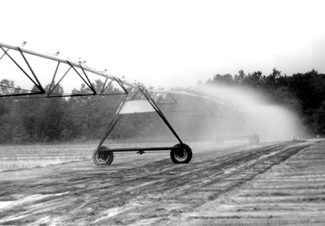 Figure 1. Center pivot irrigation system with low pressure spray nozzles.
Figure 1. Center pivot irrigation system with low pressure spray nozzles.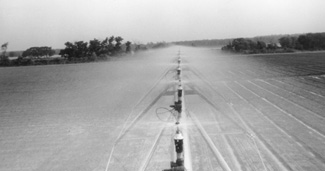 Figure 2. 360-degree spray nozzles with pressure regulators.
Figure 2. 360-degree spray nozzles with pressure regulators.Low pressure sprinklers usually operate at pressures between 10 and 30 psi. Most of these fall into a category commonly known as spray nozzles that deliver water in a fixed 360-degree spray pattern. They can be installed upright on the top of the pivot pipeline or inverted on drop pipes or hoses below the pipeline. Since they operate at low pressure, the energy requirement is less for this sprinkler compared to most others. These sprinklers have a relatively small wetted radius that results in high application rates. Also, these sprinklers produce larger water droplets that, when combined with drop hoses, reduce losses to wind drift and evaporation.
Use these sprinkler packages only on fields that are relatively flat (slopes less than 5 percent) and have coarse soils (sand, sandy loam, loamy sand) with relatively high infiltration rates.
Low Energy Precision Application (LEPA)
A special type of low pressure sprinkler package available for center pivot systems is called Low Energy Precision Application or LEPA. LEPA systems use ultra-low pressure sprinklers or socks installed on closely spaced drop pipes to apply the water directly on the ground or slightly above the ground surface. The water is often discharged directly in the furrow, so taller growing crops, such as corn, are typically planted in a circular pattern to accommodate the drop pipes.
This system was developed in the Southern Plains of Texas, and its principal advantages include low energy requirements, low wind drift, and low evaporation rates. Avoiding wind drift and minimizing evaporation are primary concerns in the Plains states, where wind velocities are often high and relative humidity low.
The major disadvantage of this system is the extremely high application rates, which will cause erosion on most Georgia soils unless certain practices are implemented. The most common means of overcoming this concern involves furrow-diking and planting in circles, which is done with a specialized implement that creates a furrow in each row middle and constructs a small dike or dam every few feet. These dikes hold the water in the furrow until it has a chance to infiltrate into the soil. Planting in circles has its own set of management concerns for each operator.
Medium Pressure Sprinklers
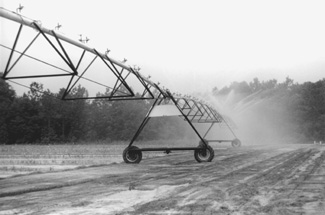 Figure 3. Center pivot irrigation system with medium pressure impact sprinklers
Figure 3. Center pivot irrigation system with medium pressure impact sprinklersMedium pressure sprinklers operate at pressures between 30 and 60 psi. They have the advantage of energy savings over higher pressure systems and lower applications rates than low pressure systems. Many of these packages use low angle impact sprinklers, though some manufacturers have other types of sprinklers that fall into this category. These sprinklers are being used widely on fields that are not suited to low pressure systems.
High Pressure Sprinklers
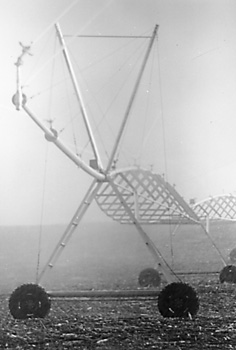 Figure 4. Center pivot irrigation system with high pressure impact sprinklers and end gun.
Figure 4. Center pivot irrigation system with high pressure impact sprinklers and end gun.High pressure sprinklers operate at pressures greater than 60 psi. They require the greatest amount of energy to operate and offer the lowest application rates. High pressure sprinklers were the only type offered on early pivot systems. Today, their use is limited to fields with fine textured soils, fields with slopes exceeding 10–15 percent, and systems that apply wastewater.
Wastewater from livestock lagoons and municipal treatment plants often contain solids that could clog the nozzles on lower pressure systems. Some pivot systems that are required to deliver wastewater with high solids content have been equipped with extra large sprinklers (big guns) with nozzles between 0.5 and 1.5 in. These sprinklers generally require between 60 and 100 psi to operate properly.
Linear Move Irrigation Systems
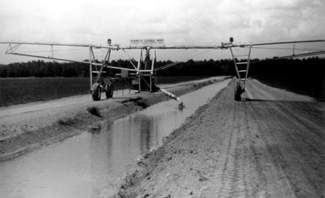 Figure 5. Ditch-fed linear move irrigation system.
Figure 5. Ditch-fed linear move irrigation system.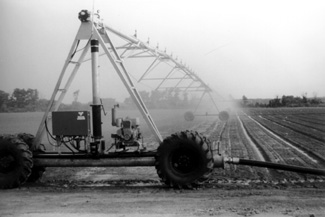 Figure 6. Hose-fed linear move irrigation system.
Figure 6. Hose-fed linear move irrigation system.Linear move systems are similar in construction to center pivot systems except that, rather than rotating around a fixed end point, the entire system moves laterally across the field. They are designed primarily for use on rectangular shaped fields. In general, for a linear move system to be feasible, the ratio of length to width should be at least 2:1; that is, the irrigation system is no more than one-half as long as the lateral travel distance. The system is best suited to fields with a minimum amount of slope (0–4 percent).
Most systems are supplied with water from a ditch that extends the length of the field or from a large hose that the system drags along as it travels through the field. Ditch-fed systems will have a pumping unit to pump water from the ditch that is carried by the system. The hose-fed systems are supplied from risers on a pressurized mainline. Either type system can be center fed or supplied from one end. The power for these systems usually is supplied from a diesel-powered electric generator carried on the main control tower, while other systems are powered by a larger electrical cord that is pulled along with the drag hose.
Linear move systems must have a guidance mechanism that guides them in a straight line down the field. Some systems follow an above-ground cable, some follow a buried cable via radio signals, some are designed to follow a furrow the farmer constructs for that purpose, and some now use GPS to provide guidance.
Like center pivots, pipelines on linear systems are generally 5 to 8 in. in diameter, depending on the system capacity and lateral length. Tower spacing will vary from 100 to 200 ft. An overhang may be used to extend the coverage beyond the last tower, and an end-gun may be used on one or both ends. Some farmers choose not to use an end gun due to the fact that they usually do not apply the water uniformly. Sprinkler package options for linear move systems are basically the same as for center pivots.
The linear move system has limited application in much of the Southeast; but in the Coastal Plains, where natural slope is minimal and fields are relatively large, they may be comparable in cost to the center pivot system. Their main advantage is on rectangular shaped fields where a pivot system would leave large areas unirrigated in the corners of the field. These systems generally do, however, require more maintenance than a center pivot because of the more sophisticated guidance system. They also require more labor to operate. This is especially true of the hose-fed systems.
Traveling Gun Systems
Traveling gun systems consist of a large sprinkler (big gun) mounted on a wheeled cart that is mechanically moved across the field, spraying water. The big guns typically discharge between 100 and 600 gpm and will irrigate a radius of from 80 to 250 ft. There are two types of traveling gun systems: cable-tow travelers and hose-pull (or hose-reel) travelers.
Cable-Tow Traveler Irrigation System
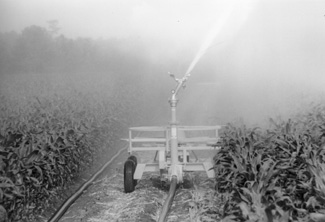 Figure 7. Cable-tow traveler irrigation system.
Figure 7. Cable-tow traveler irrigation system.A cable-tow traveler consists of a large sprinkler mounted on a gun cart and a large, flexible hose — one end of which is attached to the gun cart and the other end to a pipe supplying water from the water source. The machine propels itself through the field by winding a steel cable around a drum or pulley mounted on the gun cart. Power to propel the cable winch may be supplied by a water motor, water piston, water turbine, or auxiliary engine. The depth of water application is varied by changing the speed of the cable winch.
Hose sizes are available in diameters from 2.5 to 6 in. Typical lengths available range from 330 to 1,320 ft. The maximum length of run is twice the length of the hose, assuming the hose is connected to the supply pipe in the center of the travel lane. The cable-tow hose is flat when not in use and is stored by winding it on a hose reel.
The cable used to propel the machine is a multi-strand, high strength aircraft type. It must be attached to an immovable object at the edge of the field. A tractor can be used for this purpose, or you can install a "dead man" at the end of each travel lane.
The cable-tow traveler is a versatile machine and can be used on a variety of crops and field sizes and slopes. For most crops (except low growing crops like peanuts), an alleyway is required for the machine. This alley or travel lane may be as little as 6 ft wide for smaller machines or as much as 16 ft wide for larger machines. Clear the travel lane of rocks and other abrasive materials that could damage the hose. Typical travel lane spacings are given in Table 1.
| Table 1. Some Performance Characteristics for Cable-Tow Traveler Irrigation System | ||||||||
| Hose Size | Max Travel Distance | Maximum Capacity | Sprinkler Pressure | Typical Lane Spacing | Area Covered Per Pass | Maximum Hose Pull Range | ||
| Diam. (in.) x Length (ft) | (ft) | (gpm) | (acres) | (psi) | (ft) | (acres) | (lb) | |
| 2.5 | 330 | 660 | 165 | 33 | 60-70 | 180 | 2.1 | 650-1,000 |
| 2.5 | 500 | 1,000 | 165 | 33 | 60-70 | 180 | 4.1 | 1,000-1,400 |
| 2.5 | 660 | 1,320 | 165 | 33 | 60-70 | 180 | 5.5 | 1,300-1,900 |
| 3 | 330 | 660 | 250 | 50 | 70-80 | 210 | 3.2 | 1,000-1,500 |
| 3 | 660 | 1,320 | 250 | 50 | 70-80 | 210 | 6.4 | 2,000-3,000 |
| 3.5 | 660 | 1,320 | 375 | 75 | 80-90 | 240 | 7.3 | 3,000-4,000 |
| 4 | 660 | 1,320 | 535 | 107 | 90-100 | 300 | 9.1 | 3,500-5,000 |
| 4 | 1,320 | 264 | 535 | 107 | 90-100 | 300 | 18.2 | 7,000-10,000 |
| 4.5 | 660 | 1,320 | 730 | 145 | 90-100 | 300 | 9.1 | 4,000-6,000 |
| 4.5 | 990 | 1,980 | 730 | 145 | 90-100 | 300 | 13.6 | 6,000-9,000 |
| 4.5 | 1,320 | 2,640 | 730 | 145 | 90-100 | 300 | 18.2 | 8,000-12,000 |
| 5 | 660 | 1,320 | 960 | 192 | 100-120 | 330 | 10 | 5,000-7,000 |
Hose-Pull Traveler Irrigation System
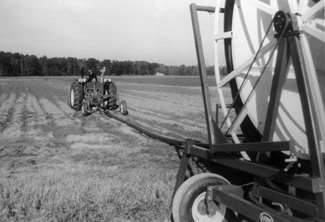 Figure 8. Hose-pull traveler irrigation system.
Figure 8. Hose-pull traveler irrigation system.The hose-pull traveler has four main components: a large reel mounted on a two- or four-wheel cart, a gun cart, a large volume gun-type sprinkler mounted on the gun cart, and a large semi-rigid polyethylene hose. The trailer mounted hose reel is parked at the end or in the middle of a travel lane. Water is fed through the hose to the sprinkler cart. The sprinkler cart is pulled along by the hose as the hose is wound onto the trailer-mounted hose reel. The hose reel is driven by a turbine, water bellows, water piston, or auxiliary engine.
Hose sizes available range from 2- to 5-in. inside diameter. The length varies from 600 to 1,250 ft. These units use a large reel to wind the hose and therefore have a high profile, with some of the larger machines being as much as 12 ft high. This height tends to make the unit top heavy. Always be careful when transporting the machines to prevent them from tipping over.
Design and operation is similar to the cable-tow traveler. The following comparisons can be made between the cable-tow traveler and the hose-pull traveler:
- The hose-pull traveler can be moved in a shorter length of time because there is no hose to reel in and no cable to unwind.
- The hose-pull traveler will require slightly more pressure to operate at the same gpm and hose length because the friction loss through the hose and drive mechanism is usually greater.
- The hose-pull traveler is usually more expensive, but it may be capable of irrigating more acreage because less time is required to reposition it.
- Only the amount of hose that is needed must be wound off the hose-pull traveler, whereas all the hose of the cable-tow machine must be wound off the reel and stretched out so water can flow through the hose. This makes the hose-pull machine easier to use on short runs.
- The hose-pull traveler does not require a separate anchor such as a tractor or earth anchor to which the cable is attached.
- The hose on the hose-pull machine is pulled in a relatively straight line. On the cable-tow machine, the hose is pulled in a loop. In areas with obstructions, this could cause more hose damage on the cable-tow machine.
- A travel lane is not required for the hose of the hose-pull machine. Except in low-growing crops, a travel lane is required for the cable-tow machine.
Both systems use a large sprinkler that requires a relatively high operating pressure—80 psi at the gun. Since pressure is lost traveling through the hose, mainline, and drive mechanism, the pump operating pressure is usually high—as high as 150 psi on a typical 550 gpm machine. This requires more horsepower and thus more energy consumption than a comparable center pivot system. Also, labor requirements for traveling gun systems are considerably higher than for a center pivot system.
Table 2 gives the inches of water applied by traveling gun sprinkler systems based on sprinkler output, lane spacing, and travel speed. Note: As of the most recent revision, it appears there are no current manufacturers of cable-tow irrigation systems. There continue to be several manufacturers of hose-pull (hose-reel) systems in operation.
| Table 2. Inches of Water Applied by Traveling Sprinklers | |||||||||||
| GPM | Lane Spacing (ft) |
Travel Speed, Inches/Minutes | |||||||||
| 6 | 12 | 18 | 24 | 36 | 48 | 60 | 72 | 96 | 120 | ||
| 50 | 105 | 1.5 | 0.8 | 0.5 | 0.4 | — | — | — | — | — | — |
| 155 | 1 | 0.5 | 0.3 | 0.3 | — | — | — | — | — | — | |
| 100 | 130 | 2.5 | 1.2 | 0.8 | 0.6 | — | — | — | — | — | — |
| 190 | 1.7 | 0.8 | 0.6 | 0.4 | — | — | — | — | — | — | |
| 150 | 145 | 3.3 | 1.7 | 1.1 | 0.8 | 0.6 | 0.4 | 0.3 | — | — | — |
| 215 | 2.2 | 1.1 | 0.7 | 0.6 | 0.4 | 0.3 | 0.2 | — | — | — | |
| 200 | 160 | — | 2 | 1.3 | 1 | 0.7 | 0.5 | 0.4 | — | — | — |
| 235 | — | 1.4 | 0.9 | 0.7 | 0.5 | 0.3 | 0.3 | — | — | — | |
| 250 | 175 | — | 2.3 | 1.5 | 1.1 | 0.8 | 0.6 | 0.5 | — | — | — |
| 260 | — | 1.5 | 1 | 0.8 | 0.5 | 0.4 | 0.3 | — | — | — | |
| 300 | 180 | — | 2.7 | 1.8 | 1.3 | 0.9 | 0.7 | 0.5 | 0.45 | — | — |
| 265 | — | 1.8 | 1.2 | 0.9 | 0.6 | 0.5 | 0.4 | 0.3 | — | — | |
| 400 | 200 | — | 3.2 | 2.1 | 1.6 | 1.1 | 0.8 | 0.6 | 0.5 | 0.4 | — |
| 300 | — | 2.1 | 1.4 | 1.1 | 0.7 | 0.5 | 0.4 | 0.35 | 0.27 | — | |
| 500 | 225 | — | 3.6 | 2.4 | 1.8 | 1.2 | 0.9 | 0.7 | 0.6 | 0.45 | 0.3 |
| 330 | — | 2.4 | 1.6 | 1.2 | 0.8 | 0.6 | 0.5 | 0.4 | 0.3 | 0.2 | |
| 600 | 240 | — | — | 2.7 | 2 | 1.3 | 1 | 0.8 | 0.67 | 0.5 | 0.4 |
| 365 | — | — | 1.8 | 1.3 | 0.9 | 0.7 | 0.5 | 0.44 | 0.33 | 0.26 | |
| 700 | 250 | — | — | 3 | 2.2 | 1.5 | 1.1 | 0.9 | 0.75 | 0.56 | 0.45 |
| 375 | — | — | 2 | 1.5 | 1 | 0.8 | 0.6 | 0.5 | 0.37 | 0.3 | |
| 800 | 260 | — | — | 3.3 | 2.5 | 1.6 | 1.2 | 1 | 0.82 | 0.62 | 0.5 |
| 385 | — | — | 2.2 | 1.7 | 1.1 | 0.8 | 0.7 | 0.56 | 0.42 | 0.33 | |
| 900 | 300 | — | — | — | 2.4 | 1.6 | 1.2 | 0.96 | 0.8 | 0.6 | 0.5 |
| 360 | — | — | — | 2 | 1.3 | 1 | 0.8 | 0.7 | 0.5 | 0.4 | |
| 1,000 | 330 | — | — | — | 2.4 | 1.6 | 1.2 | 0.97 | 0.8 | 0.6 | 0.5 |
| 400 | — | — | — | 2 | 1.3 | 1 | 0.8 | 0.7 | 0.5 | 0.4 | |
| Depth of application = 19.26 gpm ÷ (Lane spacing (ft) x Travel speed (in./min)) | |||||||||||
Solid Set and Permanent Set Irrigation Systems
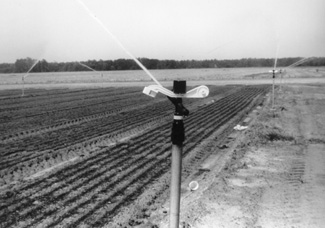 Figure 9. Permanent set sprinkler irrigation system.
Figure 9. Permanent set sprinkler irrigation system.Solid set irrigation systems consist of portable, aboveground aluminum pipe with sprinklers spaced at specific intervals along the pipe. Permanent set systems consist of buried pipes (usually PVC plastic) with evenly spaced sprinklers mounted on risers. These systems are typically used on small acreages and/ or crops that have a high cash value such as sod or vegetables. Permanent set systems are also frequently used as under-tree sprinkler systems on pecans and as overhead systems for frost/freeze protection on apples, citrus, peaches, blueberries, and strawberries.
Usually impact sprinklers are used, which can be either single nozzle or double nozzle. Spacing will vary between sprinklers, depending on sprinkler size and nozzle size. Typical spacings are in the 40 to 60 ft range, although large volume, gun-type sprinklers may be spaced as much as 250 ft apart.
Labor requirements for solid set systems can range from low to high, depending on how much pipe is available and how often the sets must be moved. Permanent set systems require very little labor and can easily be automated. Permanent set systems are also one of the most expensive in terms of initial cost per acre.
Micro-Irrigation Systems
There are many variations of micro-irrigation, but they all fall under two general categories: drip (or trickle) irrigation and micro-sprinkler irrigation. In general, micro-irrigation systems distribute water uniformly to a crop via low-volume, low-pressure devices that control the rate of water output. Examples of such devices include drip emitters, drip tape, and micro-sprinklers. Advantages of micro-irrigation over other types include:
- water conservation (uses 1/3 to 1/2 less water compared to other methods because of lower losses from wind and/or evaporation)
- energy efficient
- fewer weed problems since systems do not generally wet the entire ground surface
- area between rows remains drier, facilitating spraying, harvesting, and other cultural operations
- can be used for fertigation
- reduced labor compared to some other methods
- can be easily automated
Drip Irrigation Systems
 Figure 10. Components of typical drip irrigation system.
Figure 10. Components of typical drip irrigation system.Drip irrigation was first used in Georgia in the mid-1970s primarily on orchard crops such as pecans, peaches, and blueberries. It is currently the most popular method used on these types of permanent crops. It is also widely used in ornamental nurseries, and a different form of drip irrigation is also being used on vegetables and strawberries grown on plastic mulch. In some cases, drip irrigation either has been temporarily (annual basis) or permanently installed into row crop fields to cover areas not covered by other irrigation types. Drip irrigation can be categorized into either "point source" or "line source" type systems.
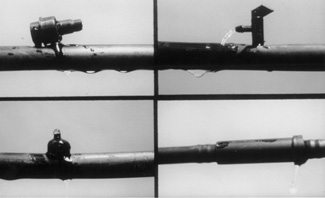 Figure 11. Examples of point source emitters.
Figure 11. Examples of point source emitters.Most orchard crops and other permanent type crops use what is commonly referred to as point source emitters. These are output devices that are typically attached to 0.5- inch to 0.75-in. polyethylene supply tubing. Output rates for point source emitters are generally 0.5, 1, or 2 gallons per hour. The number of emitters per plant will vary from one to 16, depending on the type and size of the plant being watered. For example, a mature peach tree might require twelve 2-gallon-per-hour emitters.
These systems are usually designed to operate every day during the growing season when the weather is dry to supply the daily water needs of the crop. Systems are generally designed so any one zone will not operate more than 12 hr per day. This prevents creating a permanent saturated soil condition, which could damage roots.
Point source emitters and supply lines may be installed on the ground surface or buried a few inches beneath the surface. On widely spaced crops such as pecans, the emitter lines are usually buried to prevent physical damage to the system and to facilitate field operations such as spraying and harvesting.
 Figure 12. Manifold supplying drip irrigation tape under plastic mulch on bell peppers.
Figure 12. Manifold supplying drip irrigation tape under plastic mulch on bell peppers.A different type of drip irrigation is being widely used on high cash-value crops such as tomatoes, peppers, and strawberries. This system uses what is sometimes called a line source emitter or drip tape. This product consists of a thin-walled polyethylene tape with discreet outlet points built in. The outlets may be anywhere between 4 and 24 in. apart. Typical outlet spacings for vegetables and strawberries are 9 and 12 in. Water output rates are between 0.2 and 0.5 gallons per minute per 100 ft of tape. With outlets spaced so closely together, the end result is a continuous wet strip that makes this product ideal for watering rows of closely spaced crops. Wall thicknesses for the tape can be anywhere between 4 mils and 20 mils, with 8 to 10 mils being the most common.
When used for growing vegetables or strawberries, drip tape is almost always used with the production practice known as plasticulture. The crops are planted on a raised bed covered with a plastic mulch. Usually the beds are fumigated to control insects, diseases, and weeds. The drip irrigation tape is installed in the center of the bed at the same time that the plastic mulch is laid. The drip tape may be installed on top of the bed directly under the mulch or a couple of inches beneath the soil surface to help prevent rodent damage. The drip irrigation tape is used to supply water underneath the mulch. Most growers also inject fertilizer into the system throughout the growing season to provide nutrients in prescription amounts.
Drip tape is being used widely across Georgia for irrigating blueberries and, to some extent, pecans. On permanent crops such as these, the tape is usually installed 6 to 8 in. deep. Also, since the tape is expected to last several years on these crops, growers generally use thicker-walled tape—15 to 20 mils.
Recently, drip tape has been used to irrigate row crops (cotton, corn, peanuts). This application of drip tape is referred to as subsurface drip irrigation (SDI). The tape is usually installed 9 to 15 in. deep in every other middle row, so one tape supplies two crop rows.
All drip irrigation systems require clean water to prevent clogging of the emitters. For this reason, use a filter on any drip system regardless of the water source. On most groundwater wells, a fine-mesh screen or disc-style filter is sufficient unless the well pumps large quantities of sand; then a centrifugal sand separator may also be required. Surface water sources generally require a sand media filter to remove suspended solids, algae, etc. Use the sand filter in conjunction with a screen filter installed downstream.
Many systems, particularly those that use surface water, may experience organic growths of algae or bacteria that will eventually clog emitters. These problems can usually be controlled with periodic injections of chlorine into the system. Periodic injections of acid solution may also be required if you experience a build-up of mineral deposits such as calcium or magnesium.
Micro-Sprinkler Systems
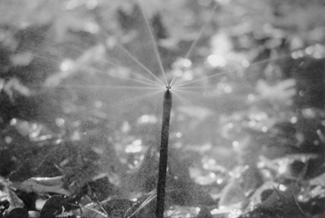 Figure 13. Example of a micro-sprinkler.
Figure 13. Example of a micro-sprinkler.Micro-sprinkler systems are very similar to drip irrigation systems except that, rather than discharging water at discreet points, the water is sprayed out through a small sprinkler device. These micro-sprinklers are typically made of plastic and are available in a multitude of flow rates and spray patterns.
One advantage of the micro-sprinklers compared to drip irrigation is that they disperse the water over a larger surface area (3 to 10 ft diameter). This is especially advantageous on sandy soils where water applied from a drip emitter tends to move vertically downward, which can cause insufficient root volume being irrigated. For this reason, micro-sprinklers are used extensively in south Florida on citrus crops where sandy soils are prevalent.
Micro-sprinklers may also be advantageous over drip irrigation where water quality is a concern. Because they have larger orifices than drip emitters, micro-sprinklers tend to be less prone to clogging. Since the water is sprayed above ground, a farmer can more easily detect when he has a problem.
Micro-sprinklers have been used to some extent in Georgia on pecans and a few other orchard crops such as peaches. Since they must be installed above ground, they may be more prone to physical damage than other types of drip irrigation systems.
Energy for Irrigation
Most farmers in Georgia use either electricity or diesel engines to supply power for their irrigation systems. A few use propane, natural gas, or gasoline.
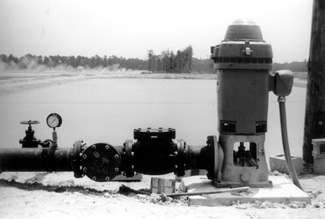 Figure 14. Large agricultural well with electric motor.
Figure 14. Large agricultural well with electric motor.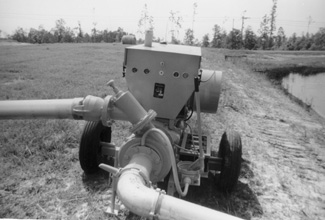 Figure 15. Diesel powered pumping unit on pond.
Figure 15. Diesel powered pumping unit on pond.Some electric suppliers offer electricity for irrigation purposes at a special rate. Many also require that the power source be interruptible. This means that the power supplier can shut off power for a few hours each day during peak demand periods. Some electricity providers offer time of day pricing with discounts for off-peak usage. This possibility should be considered in the initial design of the system.
If electric power is being considered as a power source, be sure to account for all costs associated with it, such as line extension charges, monthly minimum (standby) charges, and the rate you will pay for actual electricity use. These costs vary from one power supplier to another, and you should discuss these costs with the electric supplier before signing a contract.
An additional consideration is whether or not three-phase power is needed. Depending on where you are located on their distribution system, most power suppliers will limit you to 10 or 15 horsepower on single-phase lines. If more horsepower is required and three-phase power is not available on or near the farm, the cost to construct power lines may be prohibitive.
Many farmers choose electric power whenever possible because of the low maintenance and quiet operation. However, if electric power is not available, or if the cost is prohibitive, diesel powered engines are usually the second choice, especially for systems requiring more than 30 horsepower.
The most important factor in selecting an electric motor or internal combustion engine to supply irrigation water is horsepower (hp). The equation for calculating required horsepower for pumping water is:
HP = (Q x H) ÷ (3,960 x E)
Where:
Q = system flow rate (gpm)H = total head in feet (multiply psi by 2.31 to convert to feet)
E = operating efficiency of pump (as a decimal)
Example:
A pump must deliver 900 gpm at 300 ft total head. The pump efficiency is 75 percent. What size electric motor is required?HP = (900 x 300) ÷ (3,960 x .75) = 91 hp (a 100 hp motor would be selected)
Note: Concepts such as total head, pump operating efficiency, etc., are beyond the scope of this publication.
In general, electric motors may be selected to operate at 100 percent of their rated horsepower (they have a built-in overload factor). However, for internal combustion engines, the general practice is to calculate the horsepower required and then add 15 percent to determine the continuous horsepower rating of the engine. This provides a built-in safety factor to prevent overloading the engine, particularly after it begins to experience some wear.
Water Sources for Irrigation
Water sources for irrigation in Georgia include surface water and ground water. Remember that water for irrigation is needed most when water supplies are at their lowest level. Water sources should, therefore, be adequate to supply water during extended dry periods.
Since 1988, all large agricultural water uses in the state require a water use permit from the Environmental Protection Division, Department of Natural Resources (GA EPD). This law applies to any agricultural water use that averages more than 100,000 gallons per day in any one month (3 million gallons in a month). Any water withdrawal that exceeds 70 gallons per minute will generally require a permit. This law applies to both surface water and ground water withdrawals.
Changes in Agricultural Water Use permits are occurring on almost an annual basis. Anyone considering installing a new water withdrawal (surface or ground) point or purchasing property with existing water permits should contact the GA EPD water management office for guidance and assistance. Your county Extension agent can also help.
Since 1988, all large agricultural water uses in the state require a water use permit from the Environmental Protection Division, Department of Natural Resources. This law applies to any agricultural water use that averages more than 100,000 gallons per day in any one month (3 million gallons in a month). Any water withdrawal that exceeds 70 gallons per minute will generally require a permit. This law applies to both surface water and ground water withdrawals.
Surface Water
Surface water is available in two primary forms: ponds and streams (rivers). Use of streams and rivers is limited in Georgia because they are often not located near the farmland. This is especially true in the southern half of the state, where many of the waterways are surrounded by large swamps.
Farm ponds make up a considerable portion of the irrigation water used in the state.
The required size of an irrigation pond is based on the number of acres to be irrigated. For most areas of Georgia, the general rule is 1 acre-foot of water storage for each acre of land to be irrigated. A 10-acre pond with an average depth of 10 ft would be needed to irrigate 100 acres approximately 12 times (0.75 in. per application). This rule assumes no recharge to the pond from ground water or underground springs. If you have a spring-fed pond, adjust the storage capacity of your pond accordingly.
If you have an existing pond that is not adequate to supply all water needs of your irrigation system, you may opt to install a well to pump open discharge into the pond to maintain its water level. The size of the well needed to supplement the pond depends on the storage capacity of the pond and the size of the irrigation system.
Before constructing any new pond, check with appropriate local authorities to determine if permits are required and to ensure that wetlands regulations are not being violated. The USDA Natural Resources Conservation Service often can provide assistance.
Ground Water
The use of ground water for irrigation increased dramatically in Georgia during the 1970s and 1980s. In general, ground water is readily available in the southern half of the state below a line running from Augusta to Columbus. This section of the state is underlain by several aquifer systems consisting of porous materials like limestone, sand, and gravel. Depending on location and depth, wells in this part of the state may yield as much as 3,000 gallons per minute.
The majority of the northern half of the state is underlain by igneous rock such as granite and gneiss. These consolidated rock formations are basically impermeable and water can only be obtained where the well intersects cracks and fissures in the rock that contain water. Typical well yields are from 5 to 10 gallons per minute, which is not adequate for most irrigation systems. Occasionally, a lucky landowner will get a well that yields up to 100 gallons per minute, but this is rare. Most irrigators in north Georgia use surface water as their water source.
Most wells in south Georgia that are 6 in. in diameter or larger will require the owner to obtain a withdrawal permit from the state via GA EPD.
Additional Resources
The UGA C.M. Stripling Irrigation Research Park website has numerous resources available to supplement this publication, such as links to manufacturer websites, other Extension publications, state and federal resources, tutorials, etc. https://striplingpark.caes.uga.edu/resources.html
In addition to the C.M. Stripling website, four irrigation equipment economic enterprise budgets for both electrical and diesel pivots of 65 and 160 acre sizes can be found on the UGA AgEcon Extension budgets and tools website: https://agecon.uga.edu/extension/budgets.html
Anthony W. Tyson, former Extension Engineer, contributed to earlier versions of this publication.
Status and Revision History
Published on Sep 12, 2002
Published on Feb 20, 2009
Published on May 14, 2009
Published with Full Review on Feb 16, 2012
Published with Minor Revisions on Dec 23, 2015
Published with Minor Revisions on Dec 07, 2022
